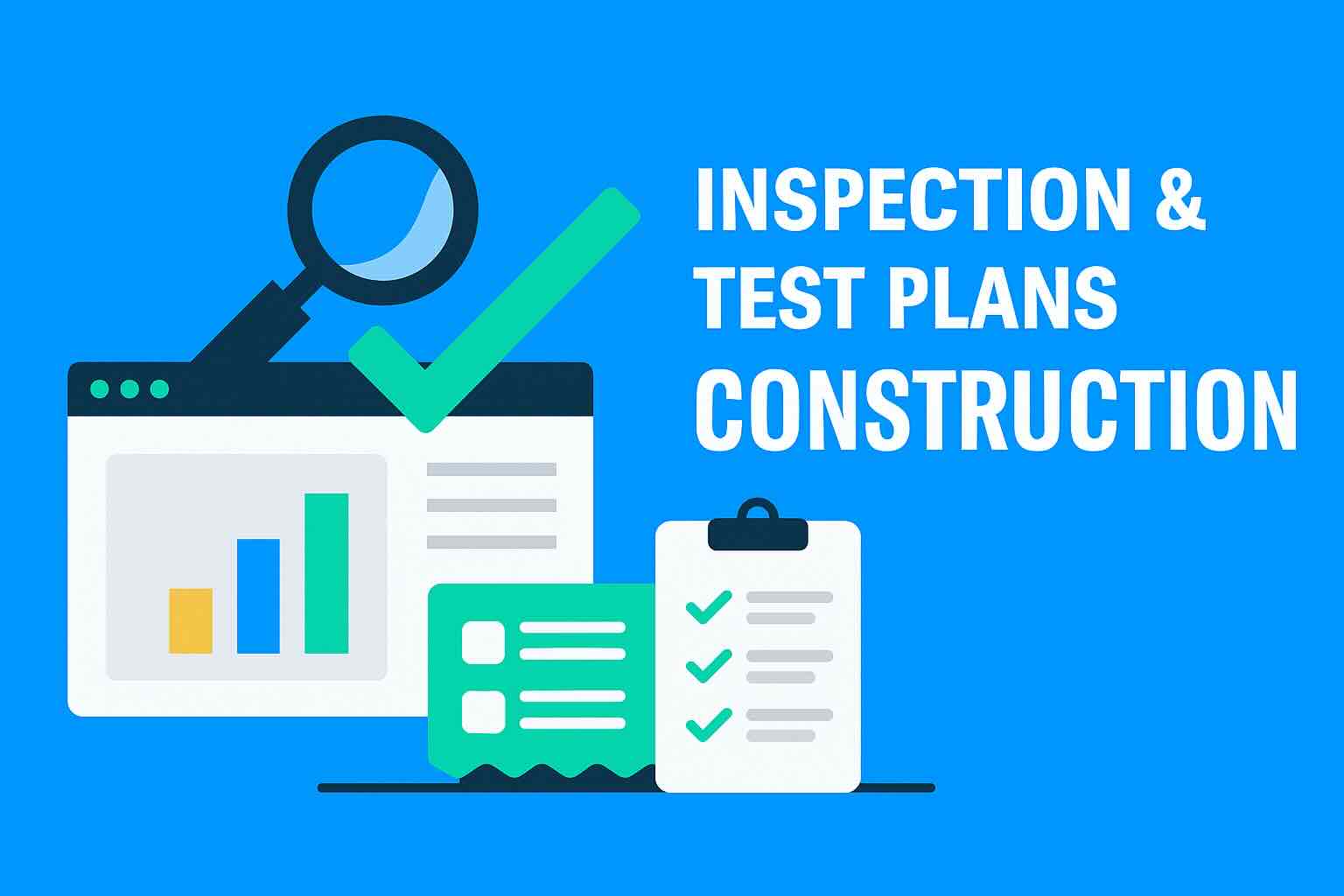
During the construction of a Project, the Client and his representatives are in a continuous need of objective evidence that the works are performed as they should be. That evidence is collected with the ITP in Construction.
Get Your Free ITP Template
Download the Inspection & Test Plan Template that has been used across 1000's of construction projects all over the world.
What is an Inspection Test Plan in construction?
ITP in construction means “Inspection and Test Plan”, and it is the main document that describes in detail what, by who , when and how something will be inspected or tested on-site or off-site and also what kind of record will be produced as evidence.
Many times, finding objective evidence of compliance in construction means that the works will be inspected by a third party competent person or that the materials will be tested by certified laboratories.
An ITP may sound simple, but considering the complexity of modern construction projects, Quality Control on site can easily become a nightmare for any project.
How do you create an Inspection and Test Plan?
In order to create a good ITP in construction industry (here is the ITP Template Excel) you must know the applicable specifications, standards, regulations and design for that specific element, section or works. The ITP must also include all the following items:
- the item/activity that will be checked/inspected/tested (e.g.concrete strength)
- the document that requires this item to be checked (usually it is in the contract or design specification/standard)
- the document that according to, this item will be inspected/tested (usually a standard or a statutory requirement)
- the kind of inspection that needs to be performed (visual inspection, document approval etc)
- the frequency that this inspection needs to be performed (e.g. for concrete slump test = once for every track)
- the objective criteria/tolerance parameters that will determine if the inspection or test for that activity has passed or failed
- the kind of document that will be prepared and saved as a record of pass or failure (usually a signed-off form,a checksheet, a testing machine print-out, a photo or a report etc)
- if this record needs to be a deliverable, meaning that it needs to be kept and handed over to the Client at the end of the Project as part of the As-Built Folders
- the responsibilities of every party involved (Contractor, QC Engineer, Client’s Representative etc) which can be a Hold Point, a Witness Point, a Review Point etc
The responsibilities are usually simplified with a codified system as following:
H= Hold Point (the party has to perform this check and it needs to be successful in order to proceed to the next stage of the construction)
W= Witness Point (the party e.g. Client has to be informed that a test is being performed but its presence and signature is not obligatory to move on to the next stage)
R= Review Point (the party has only to review the record/document that the check has been done and it passed).


Concrete testing on site (Schmidt hammer)
It is extremely important that the Inspection and Test Plans for an activity or even for the whole Project have been agreed with the Client because the compliance (or not) of the works can easily lead to claims and compensation events costing millions at the end of the project.
A classic example of inspection in construction projects is Concrete pouring where all parties basically need to witness it and inspect it.
In many cases, an Inspection and Test Plan is also attached to a Method Statement (RAMS) or more often it is submitted for approval along with the relevant Method Statement to avoid situations where it’s forgotten to be submitted.
I have personally found this to be extremely effective till everyone gets into the habit of issuing the ITPs on time on any project.
Why do we need a Inspection Test Plan?
The ITP (Inspection & Test Plan) is the main document that clarifies the responsibilities for quality control inspections in a construction project and it’s also required by many construction contracts and Clients around the world.
Without an ITP there is no defined quality control plan on and off site and there is usually confusion in regards to what the standards and the requirements are in terms of compliance.
Moreover, the ITP is the document that specifies what records will need to be kept up for the handover of the project to the Client.
Who prepares the ITP in construction?
The ITPs are usually prepared by the teams who are responsible to deliver the activity or in other words the construction teams on site.
As a rule of thumb, the Inspection & Test Plans are prepared by the same people or teams who are usually preparing the Method Statements (or RAMS).
The ITP usually needs to be reviewed by the Quality team on a project and sometimes by the Designer and the Client as well.
Conclusion
A well structured ITP will help the activities on site, it will give clear instructions to the Quality Control professionals and inspectors and finally become a great tool for the completion of the handover as-built packages at the end of the project.
The ITP in construction industry is a very valuable tool that tidies up all quality control activities and has become ubiquitous the last years in any large construction project where compliance with the standards and the design is required by the Client and the contract itself.